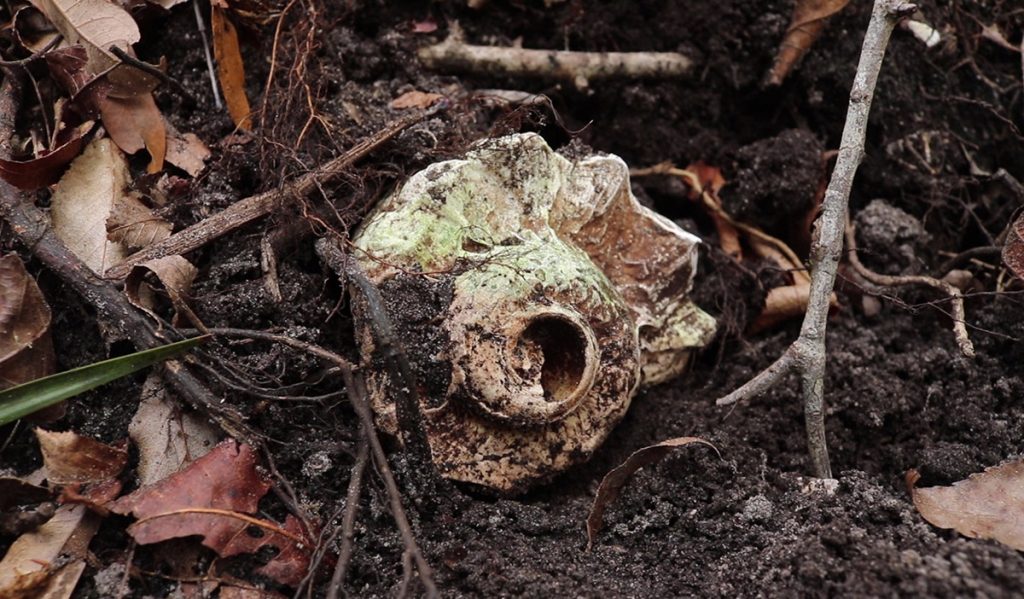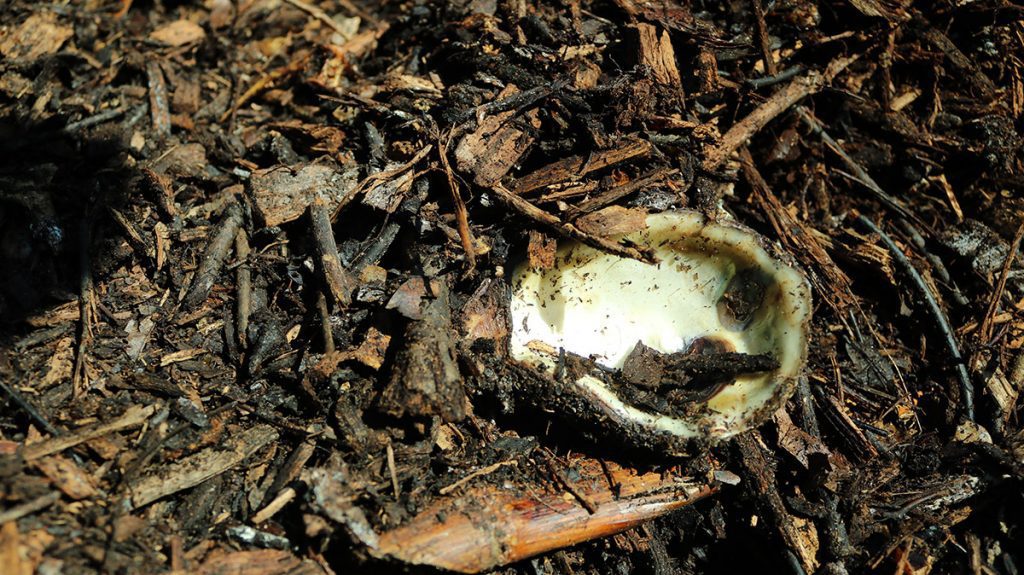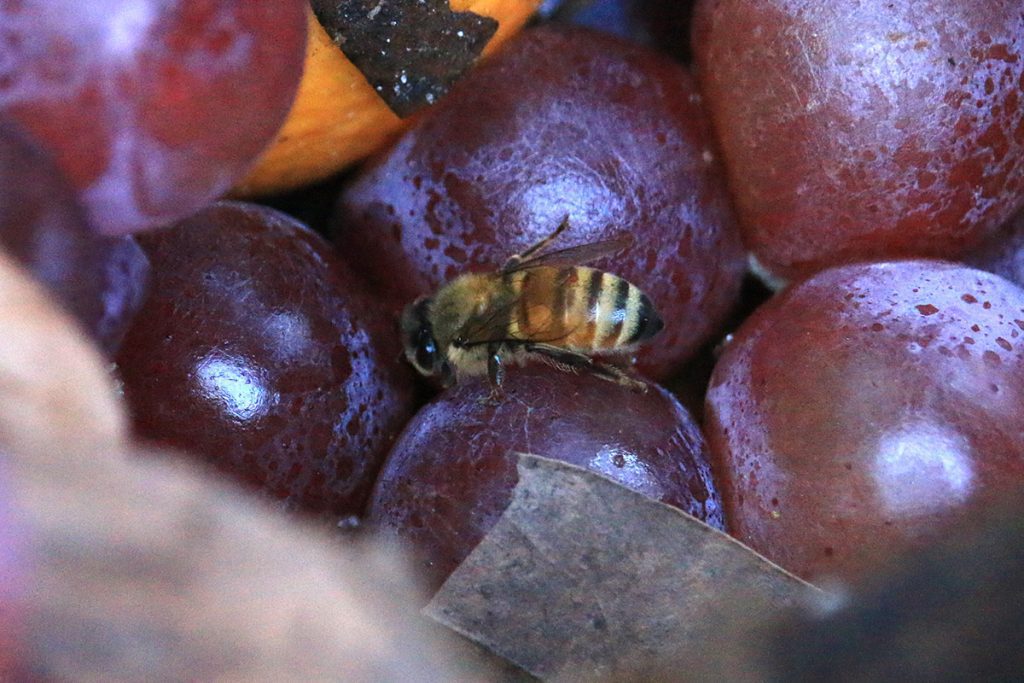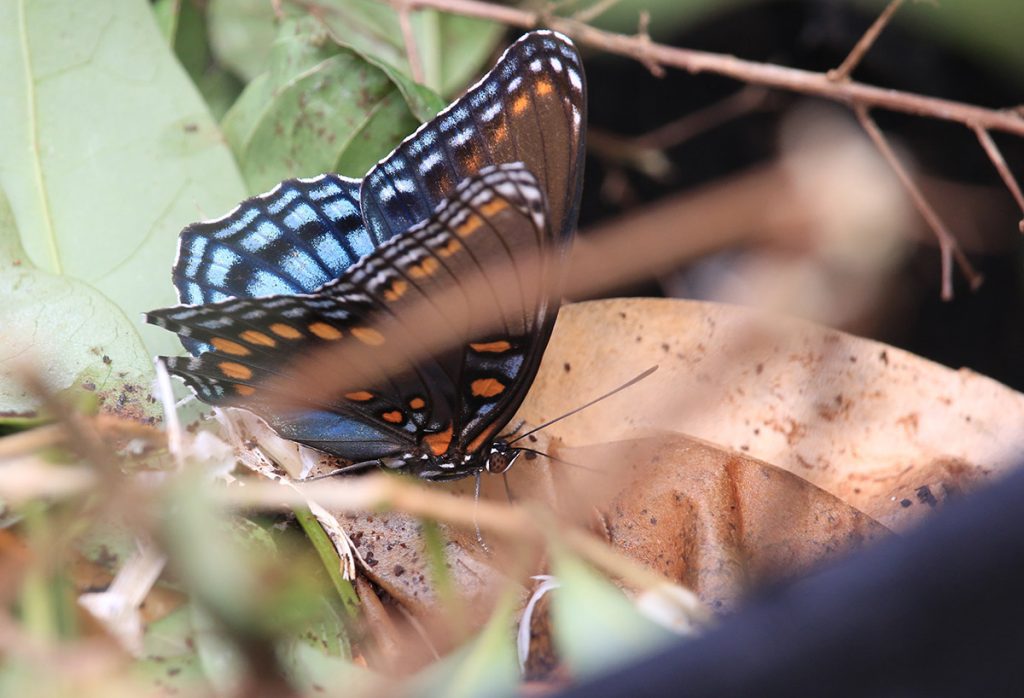Years ago I tagged along with an archeologist to a site in the Saint Marks Refuge. After some bushwhacking through a hardwood forest, we found ourselves in a long abandoned village. There were no stone ruins, or visible structures of any sort; nothing at all to distinguish it from the surrounding forest. Only one clue told us what had been here before. Looking down, we saw a swath of dark soil peppered with conch and oyster shells. We were, in a way, looking at the compost of prehistoric Floridians.
This was a remnant of a midden mound. Food- and human- waste was tossed to the outskirts of a settlement, encircling it. Scattered deer bones, shells, or pottery shards might catch our eye today, but most of the midden has decomposed in the 1,500 or so years since the site was abandoned. And, over a millennium after the breakdown of meat and vegetable material, organic matter still darkens the light sandy soil in Byrd Hammock.
At Turkey Hill Farm in present day Tallahassee, Herman Holley maintains mounds full of crab and oyster shells, and dark earth. The mounds aren’t the byproducts of hunting and gathering, though Herman is looking for a similar transformation of the soil. He’s making compost, intentionally. When the seafood waste and wood chips finish breaking down, he’ll spread the mixture in beds of lettuce, bok choy, tomatoes- whatever’s in season.
It’s a magical process. All the vegetable matter you toss from your kitchen, mixed with leaves that fall into your yard, come together to nourish the living plants in your garden. It’s relatively simple to do. After all, it’s a process that has happened without our help since the first plants evolved, and died, hundreds of millions of years ago. But to create compost that’s useful in your garden does take some know-how.
Luckily, we have Herman and UF/IFAS Leon County Extension Agent Mark Tancig to share their knowledge with us.
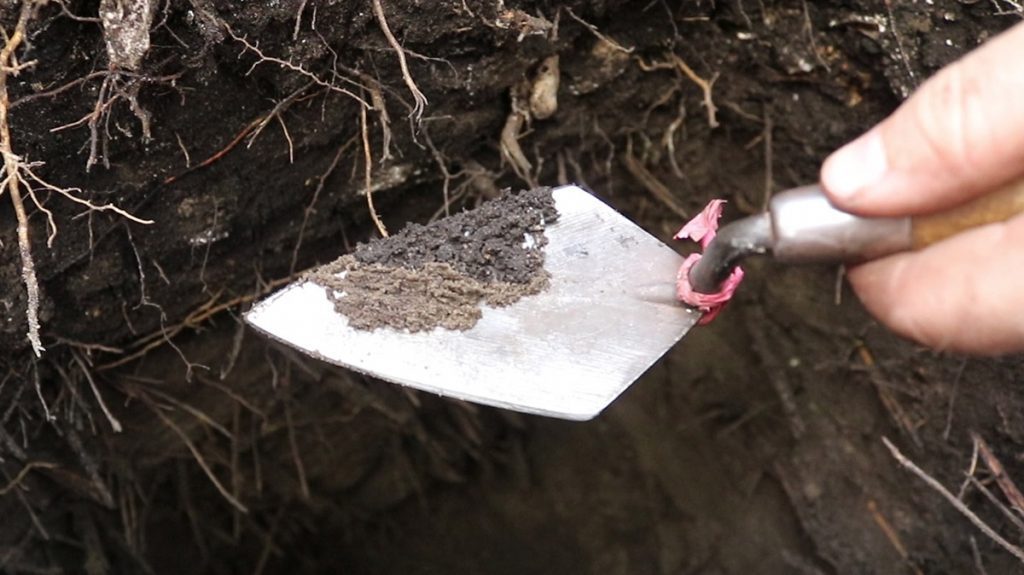
Why Transform the Soil?
Let’s start by looking at the earth in your yard. As we learned in our last segment, sandy soils in the south of Leon County drain easily. Almost too easily, depending on what you want to grow; after all, the way soil retains moisture affects how a plant’s roots take in water. In north Leon County, the Orangeburg of the Red Hills is a loamy sand. Loam is sand mixed with enough silt and clay that water drains more slowly.
After identifying your soil type, think about what kinds of plants you want to put in your soil. If you’re looking to landscape your yard, and your soil is undisturbed, you can make use of native plants adapted to your sand or loam. Once established, they won’t need as much watering and maintenance, and will enhance the wildlife value of your home space.
But what if you want to grow tomatoes or other vegetables? Quick draining sand might not be ideal. Or what if your soil is disturbed? Maybe it was compressed by the heavy machinery used to build your neighborhood. Or maybe your land was converted from some other use that taxed the soil.
There are a few ways to fix degraded soil, or to keep soil healthy. One way is to build soil through composting.
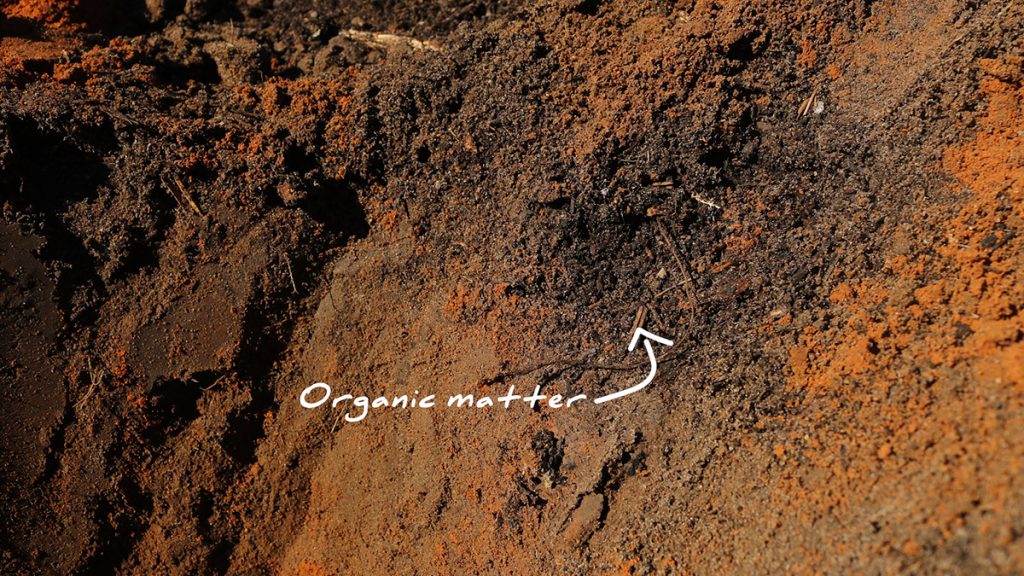
Organic Matter in Your Soil
In this video and in the last, Mark digs holes to look at soil profiles. At the extension office, we can see dark bands near the surface of the reddish Orangeburg sandy loam. This is the topsoil, organic matter deposited by dead and decomposing plant and animal matter.
“You need three percent organic matter.” Herman says. “Most farm soils are one to one-and-a-half percent. But in most industrial farming, the nutrients are put there in chemical form. In organic farming, you build the soil. You get the three percent organic matter in the soil.”
The topsoil affects how air and water enters your soil and gets to plant roots. Adding compost can change the structure of the topsoil.
Soil with at least three percent organic matter slows the draining of water in sandy soils, and loosens clayey or compacted soils so that water can better penetrate them. And as microbes in your soil break down organic matter over time, they release nutrients and make them available to plant roots.
Aerobic vs. Anaerobic Decomposition
Dumping every bit of dead plant and animal matter into a heap and forgetting about it will create something of a compost- eventually. You do, however, want to create something stable, something to nourish the health of your plants. And you’ll probably want it within a certain time frame. You can accomplish that with hot- or aerobic- composting.
Aerobic composting is an active process. Microbes get busy breaking down organic matter, which generates heat. For them to stay active, they need:
- A balance of carbon and nitrogen (a roughly 30:1 ratio)
- Oxygen.
- Moisture.
Anaerobic decomposition gives off gasses, and an odor. When you exclude oxygen from the bacteria that break down organic matter, it produces methane, carbon dioxide, and hydrogen sulfide. Anaerobic decomposition is a process used to create natural gas.
But you don’t want a compost pile that releases greenhouse gasses, or that smells bad. “When you go by a landfill,” Herman says, “those smells that you smell are anaerobic decomposition.”
Browns and Greens
Before we talk about oxygen and moisture, let’s talk about what you’re putting into your pile. To reiterate, we need around thirty parts carbon (browns) for every one part of nitrogen (greens).
You can use a multitude of high nitrogen materials for your pile, from fish to coffee grounds to grass clippings to, even, manure. And though we show Herman’s seafood based compost in the video (he makes two pickups a week from Southern Seafood at Market Square), we’ll focus on plant material for the purposes of this post.
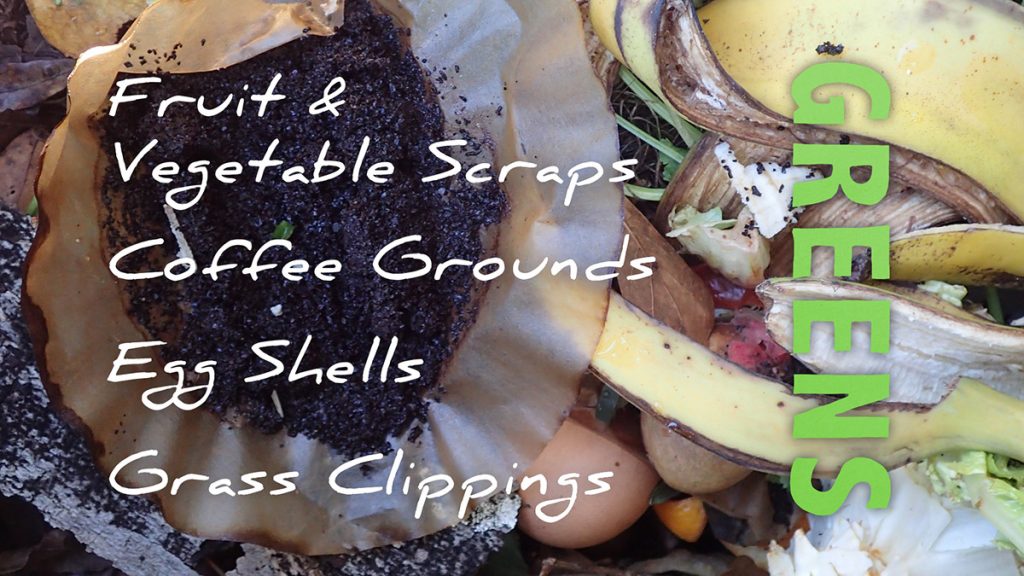
Greens will typically come from your kitchen, or from green leaves and grass clippings. The list below shows the carbon to nitrogen ratio for a few common items, according to UF/ IFAS.
- Kitchen scraps such as fruits and vegetables (15:1)
- Coffee grounds (20:1)
- Grass clippings (20:1)
- Egg shells are often listed as a green, but are more a source of calcium than nitrogen.
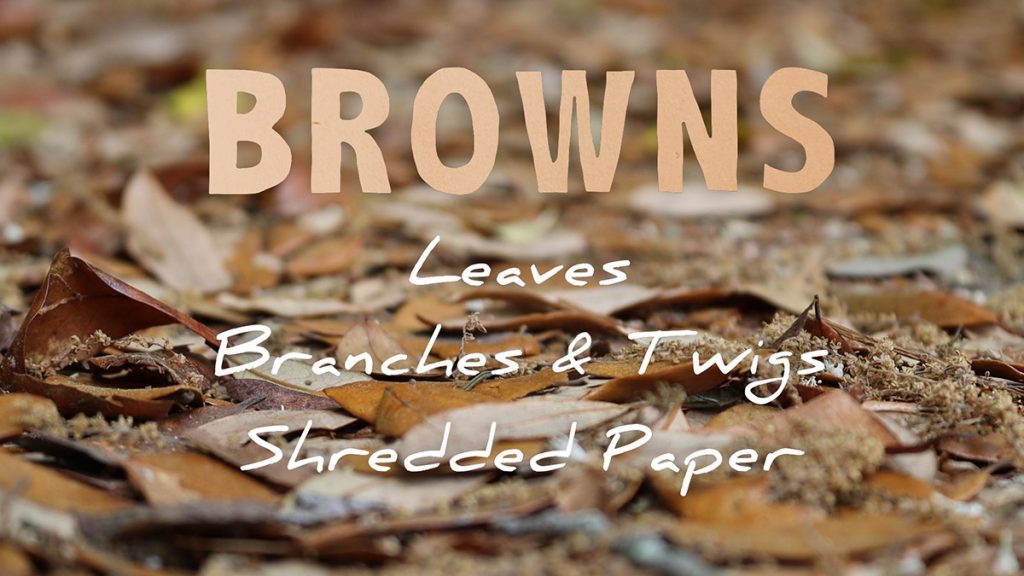
Browns will typically come from your yard. Since Herman uses a higher nitrogen green (fish waste), he uses wood chips as his primary brown. I’ll explain below why you’d want to include some wood in your pile, but you’re not going to get compost hot enough with kitchen scraps to break down a pile of wood chips.
- Fallen leaves (60:1)
- Wood (600:1)
- Straw (100:1)
Making your Compost Lasagna
Add your compost in layers. You can start with browns, and if you include little bit of wood, it’ll keep the bottom of your pile from getting too compressed. This will create better air circulation at the bottom of your pile.
After that, add a layer of greens, and another of browns, and so on. I can’t tell you how to achieve a precise 30:1 ratio, though the pile lets you know when you’re out of the desired range. We’ll talk more about that below. But what the ratios tell us, roughly, is to add more browns than greens.
“So once you’ve been building your compost pile,” Marks says, “you’ve been making this lasagna of greens and browns, after a while, those microbes are going to get to work.”
This is when the pile gets hot. The trick is keeping it hot.
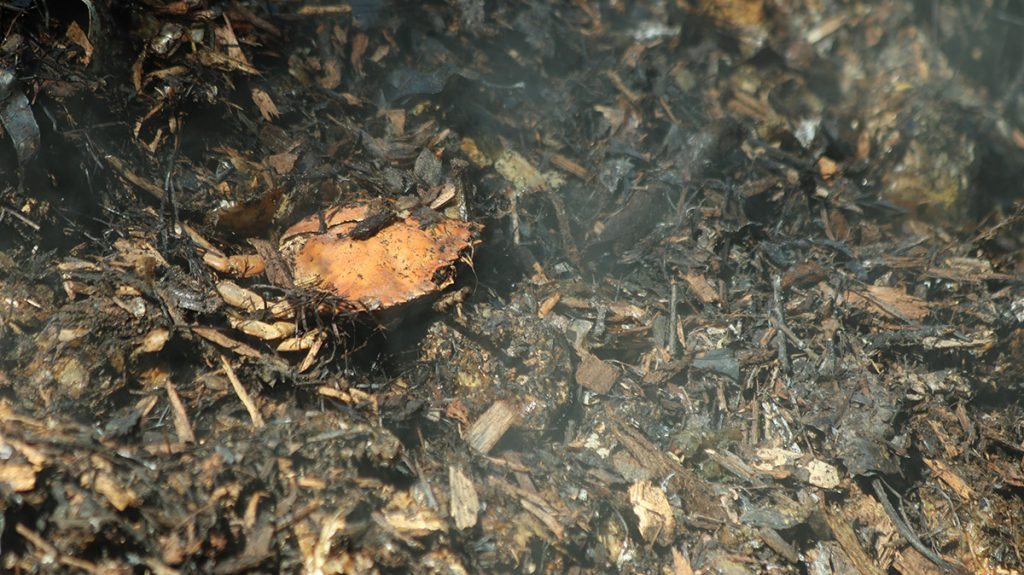
Bringing the Heat: Turning Your Compost
“I noticed a pattern,” Herman says. “I piled things up approximately right and had a little moisture. And they heat up- and plateau. And then, at a certain point, the temperature drops. If you turn it, then it heats back up, and plateaus again. This time the plateau is longer.”
When the microbes are active, they generate heat. Then when the pile sits for too long, they lose oxygen and become less active. Turning the compost regularly exposes the material throughout the pile to oxygen.
“Typically we would tell folks to work from the outside,” Mark says, “so the stuff that has been on the outside of the old pile, you want to flip that to the middle of the new pile that you’re flipping into.”
You move the parts of the pile exposed to air and moisture inwards, and bring the buried material to the surface. I notice dry leaves at the edges of my piles, and I like to mix them into the wetter looking parts of the mixture. Moving and mixing the parts of the pile helps break it down to become more uniform in texture.
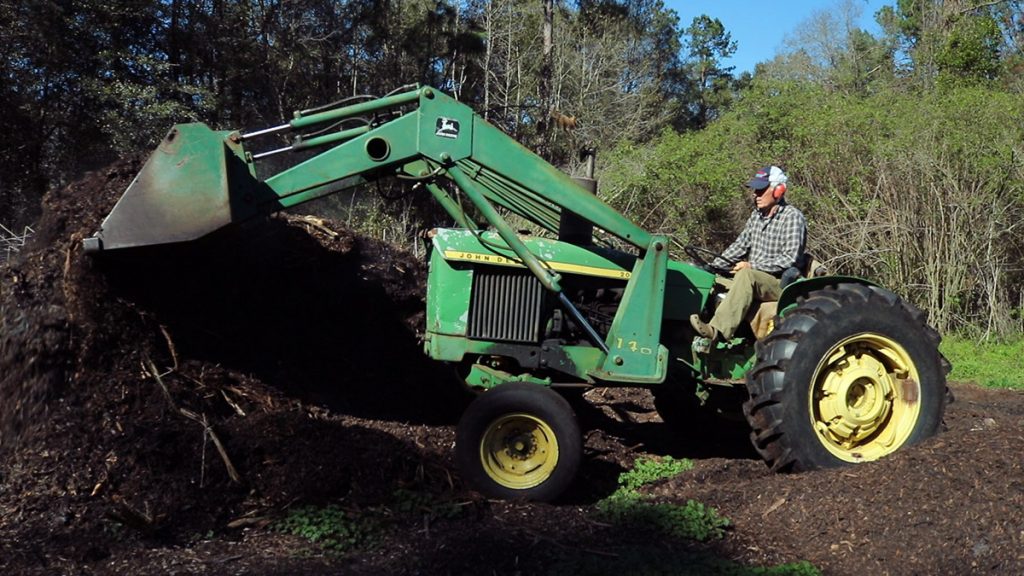
Herman warns against a compost pile becoming too wet and compact. When it becomes too squished down, oxygen doesn’t penetrate the pile as well. “You need to have some coarse material as part of that mix, even if you’re going to sift it out.” Herman says. “But the pile has to be able to breathe.”
Including a few branches and twigs, as well as hard fruit pits like from an avocado or a peach, keeps your pile chunky. And a chunky pile is going to breathe a little easier than a- smooth and creamy pile? I don’t know. When it’s time to add it to my garden, I sift out the chunks and add them to a new mix. You could also let the chunks sit in your soil and break down over time.
Moisture
“The one other important thing, your compost pile does need is to stay moist.” Mark says. “We usually get enough rain in Tallahassee, where if it’s uncovered, it’s probably fine.”
We have had extended droughts in recent years, which is a concern. Conversely, your compost can get overly wet during heavy rain periods. The pile should be moist, but not soaked through. As Herman warns, a sodden pile doesn’t breathe as well, and may start to smell. You can fix that by turning it, and adding dry browns to absorb the excess moisture.
Herman manages wet and dry periods by shaping his piles.
“When it’s dry like this one is, and rain’s coming,” Herman says, “I spread [the piles] out so there’s more surface area, and sort of flat to concave on the top so that they catch all of the water. If they’re plenty wet and there’s rain coming, I pile them conically so that they shed water.”
During droughts, he’ll pull water from a pond on the farm.
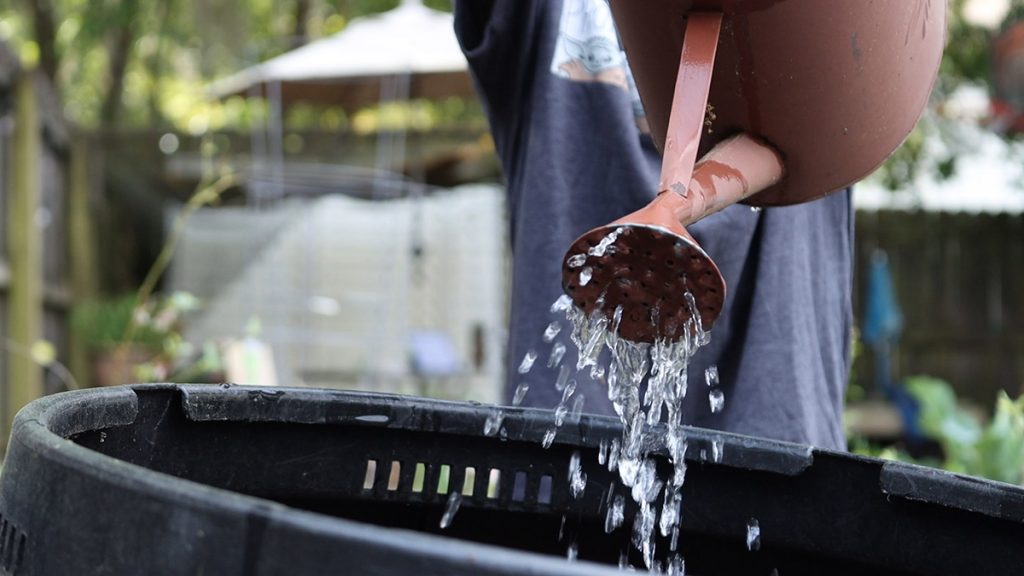
Managing Air and Moisture in Different Kinds of Compost Bins
Most of us won’t work with piles as large as Herman’s, and we all have to figure out how to manage air and water with the different methods we use.
“If you have one of these compost units that has a cover,” Mark says, “you will want to take that off and give it some water every now and again.”
Many of us in Leon County have obtained Earth Machine composting bins over the years. Neither Herman nor Mark recommends them, as they’re entirely enclosed. This restricts air flow and keeps the rain out. It was designed to keep the decomposing material “out of sight, out of mind.” And while this might make composting palatable to someone who’s on the fence about keeping all those gross kitchen scraps around, it’s less effective.
I have two Earth Machine units, and I took the tops off of both after attending an IFAS composting workshop a couple of years ago.
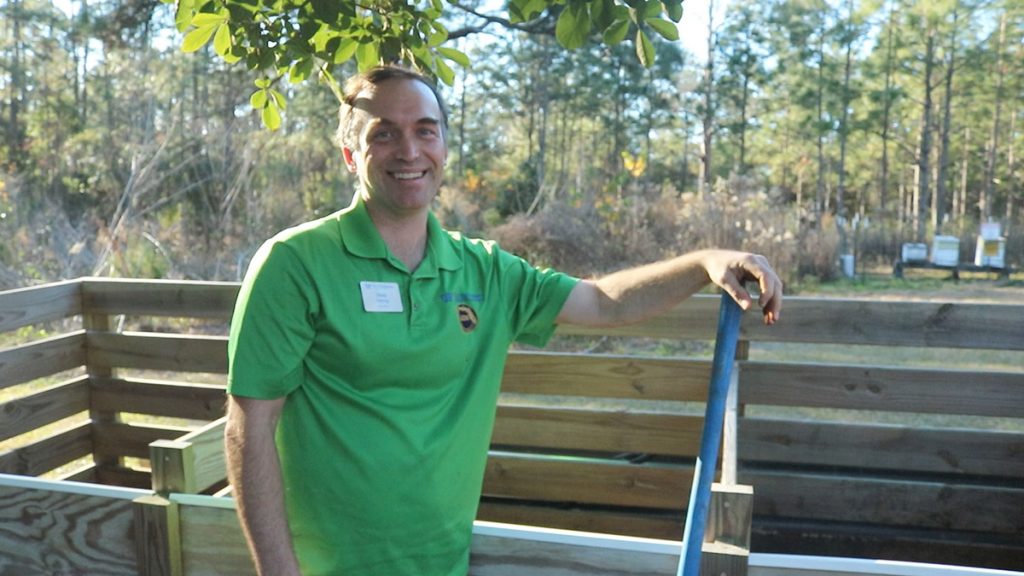
You can see the Leon County Extension compost pen behind Mark in the video; it’s made of wood with the slats widely spaced to allow air flow. There are four compartments, and Mark moves piles from one to the other as they break down, which aerates them. Having it in four stages allows Mark to continually make compost available to the IFAS demonstration gardens. But you need to have enough material to maintain four hot piles.
Friends of mine confine their compost differently. One uses two pens made of chicken wire, as well as a two-chambered compost tumbler. That’s completely enclosed- but you can turn it easily. Another friend composts in the ground where a tree stump has gone soft.
Different methods work for different spaces, and you may find yourself experimenting to find the best workflow for you.
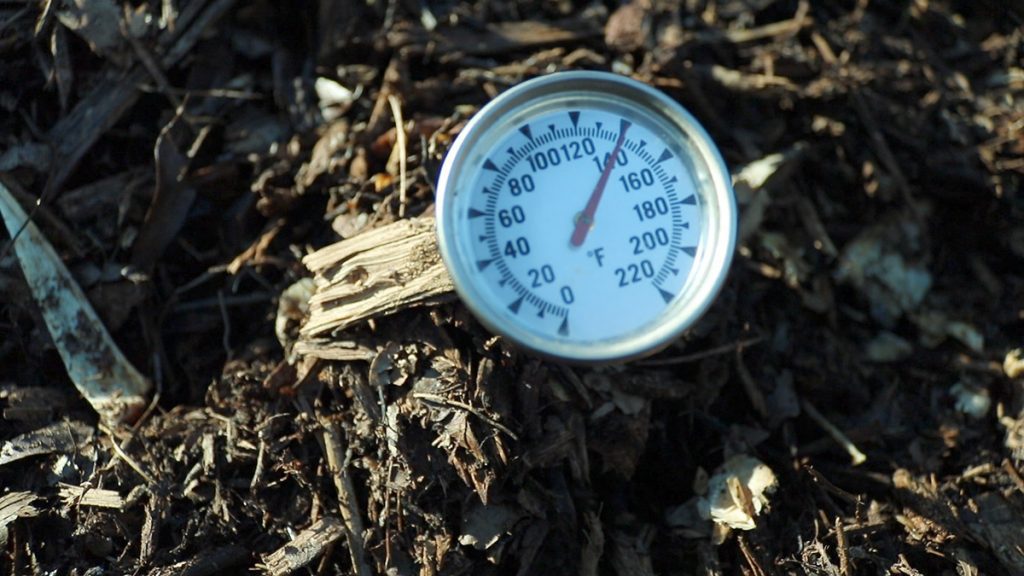
Troubleshooting Your Compost
Every method has different benefits and challenges. But, whether you have an Earth Machine or a tumbler or an open pile, you want to monitor the same factors: your balance of brown and green materials, moisture, and air flow.
When you’re judging the success of your pile, you’re looking at two things: odor, and temperature.
If your pile starts to smell like a rotten egg, it might be too wet, too high in nitrogen, or lack oxygen.
If it looks too wet, add some dry browns to absorb moisture. Also, keep an eye on the weather forecast. If you think your pile might get too wet, you can cover it.
If it smells, but doesn’t look too wet, turn it. And if aerating it doesn’t help the smell, your brown to green ratio may be off. Add brown materials.
If your pile isn’t hot enough, it may be too dry, lack oxygen, or lack nitrogen.
I invested in a compost thermometer, which lets me know if I’m getting to 110 degrees Fahrenheit. There are ways to tell whether your pile is hot enough without a thermometer. One is that materials are breaking down too slowly. Also, you should also feel some warmth come off of the pile when you turn it. On a cool morning, you should see steam.
In my uncovered Earth Machine, I can see when I have too many dry looking leaves. I also know that I need to turn it more often than I do sometimes. Turning regularly and keeping an eye on moisture will keep you mostly on track.
Other than that, it may take some trial and error for you get a feel for a carbon/ nitrogen mix. Be aware of how many veggies vs. how many leaves you see when you turn it. How does it look when it smells good (like the foods you’ve added, only earthier), and is reaching temperatures that indicate active microbes? How does it look when it smells bad, or isn’t warming up?
Critters in your compost
If I see ants in my compost, I feel like maybe it’s not hot enough to keep them out. Just today I turned a pile and exposed their larvae to the sun.
According the IFAS page on composting, pests in your compost could be attracted by animal fat. They recommend against using animal material. And if you’re in an urban or suburban setting, pests would be a major reason to stay away from composting animal remains. Herman showed me where coyotes dug fish bones out of a pile, and years ago when Full Earth Farm used seafood in their compost, I remember flocks of vultures around their piles. It’s something to keep in mind.
Flies can also be an issue, so I try to keep greens covered with a layer of leaves. This means keeping a thicker layer of leaves up top, moving it aside when I add greens to the pile.
But then, not all flies are bad.
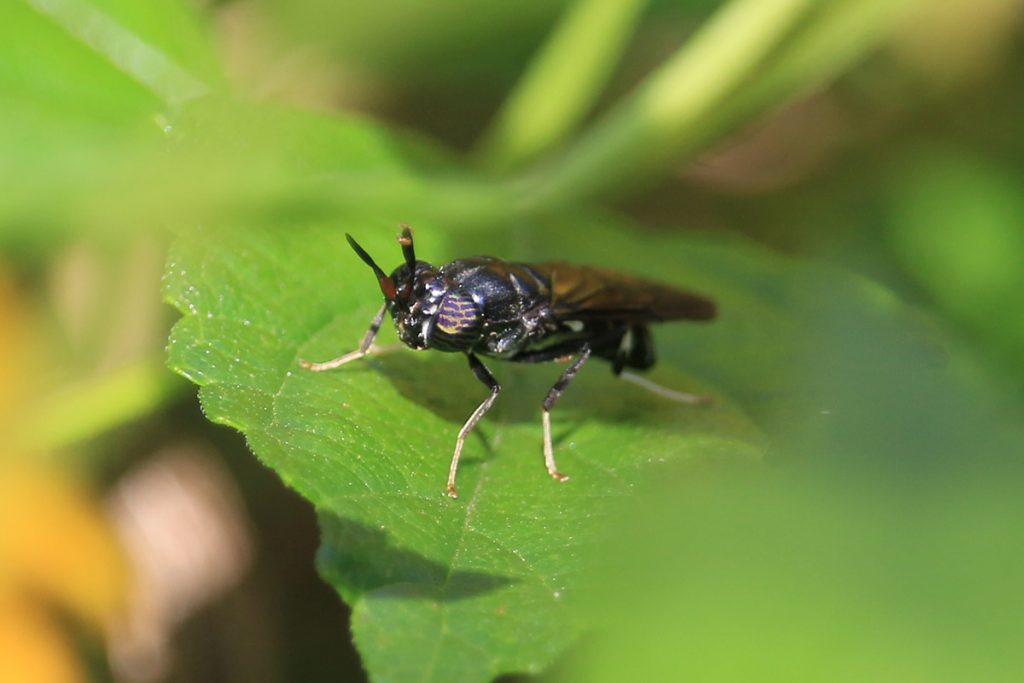
I’ve recently been seeing these in the yard again, and one right by the compost. Black soldier fly larvae break down compost by eating it.
They’re not the only beneficial insects looking for meals in my compost. Sometimes I hastily toss rotting fruit atop the compost, and don’t take the time to mix it in. Those sugars are attractive to some of our favorite insects- pollinators.
Both photos were from the late fall or winter, when flowers become less plentiful.
Embracing Decomposition
In my compost, or in the forest, I appreciate the way death in nature fuels life. A tree dies, and mushrooms begin to grow in it, and soften it. Insects and snakes and salamanders hide in and under it, and if it’s still standing, birds will burrow into it to nest. Eventually, it becomes topsoil in the forest, a fertile spot from which new plants will grow, repeating the cycle.
When we talk about landscaping for nature, we’re talking about more than wildflowers for pollinators. There needs to be a place for plants to break down, and for insects and other wildlife to be allowed to make use of it for food or shelter. A large branch falls, and it can be a home to sweat bee nests. Leaves on the ground shelter numerous overwintering insects, from bumblebees to fireflies to several butterfly species. The insects that eat those leaves feed birds.
And once those leaves have decomposed fully, they add organic matter to your topsoil. If I let leaves sit in some corner of my yard long enough, I’ll go to rake them off the pavement and find new soil under them, full of worms.
Compost is doubly beneficial. I keep my kitchen scraps out of a landfill, where they would decompose anaerobically and release greenhouse gasses. Instead, they’ll build my soil, and healthy soil sequesters carbon.
Herman says that we can save the world with Aerobic composting. Maybe. But it is something you can do in your own home to make some small difference. And, selfishly, it could make a positive difference in your garden as well.
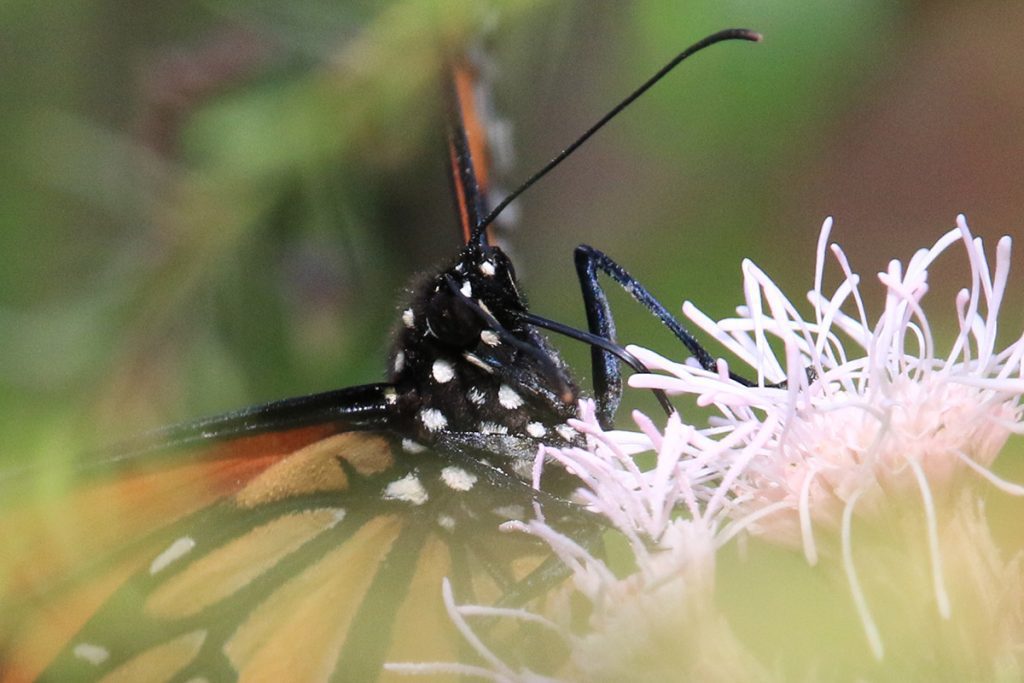
Dig Deeper into Backyard Ecology
What can we do to invite butterflies, birds, and other wildlife into our yards? And what about the flora and fauna that makes its way into our yards; the weeds, insects, and other critters that create the home ecosystem? WFSU Ecology Blog takes a closer look.

